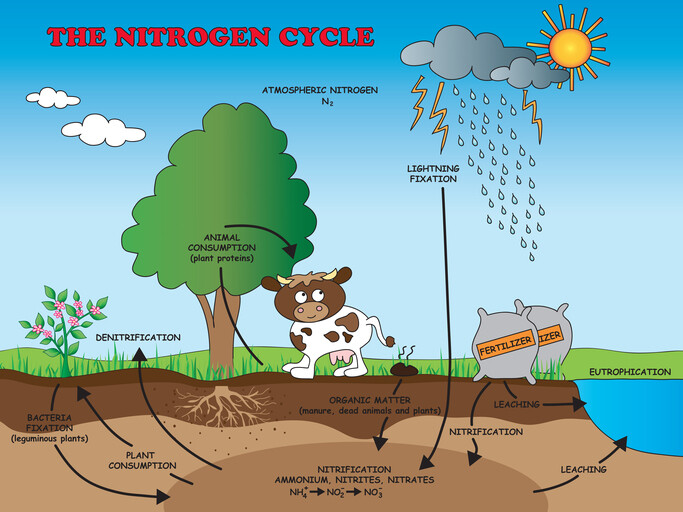How does Aquaponics work?
Aquaponics is made possible by the biological process known as the nitrogen cycle. The nitrogen cycle is one of the key aspects that make aquaponics different to hydroponics, where nutrients in an aquaponics system are derived naturally (through the nitrogen cycle) instead of introduced through man-made fertilization in a typical hydroponics system.
What is the Nitrogen Cycle?
To put it simply, you can think of the nitrogen cycle as the process through which biological waste is broken down and transformed into nutrients for plants and other organisms.
The nitrogen cycle is actually more complex than that, but in regard to aquaponics, that is an easy way to think about it. It is what allows fish poo and other waste to become food for our vegetables and plants that we grow in an aquaponics system.
How does the Nitrogen Cycle work?
Basically, the nitrogen cycle in an aquaponics system works primarily through ammonia (from fish waste) and the transformation of that ammonia into nitrates (plant nutrients) by beneficial bacteria.
Fish and other aquatic life produce ammonia through their waste products, typically in the form of fish poo and urine, but fish also excrete ammonia through their gills as they breathe underwater. Ammonia is toxic to fish and other aquatic life. This ammonia can build up in the water of a fish tank and will eventually kill fish if nothing is done to rectify the ammonia levels.
That is where beneficial bacteria come in. Certain types of bacteria feed on ammonia and convert it into nitrites. Nitrites in sufficient quantities can still harm fish, but luckily there are other beneficial bacteria that feed on and convert that nitrite into nitrates.
Nitrates are still technically toxic to fish in sufficient number, but nitrates are what plants are able to take up as food. Plants will take up these nitrates as nutrients, thus “purifying” the water for the fish. The ending result is a cycle of fish waste (ammonia) continually being transformed into plant nutrients (nitrates). Through this continuous cycle, aquaponics is made possible.
